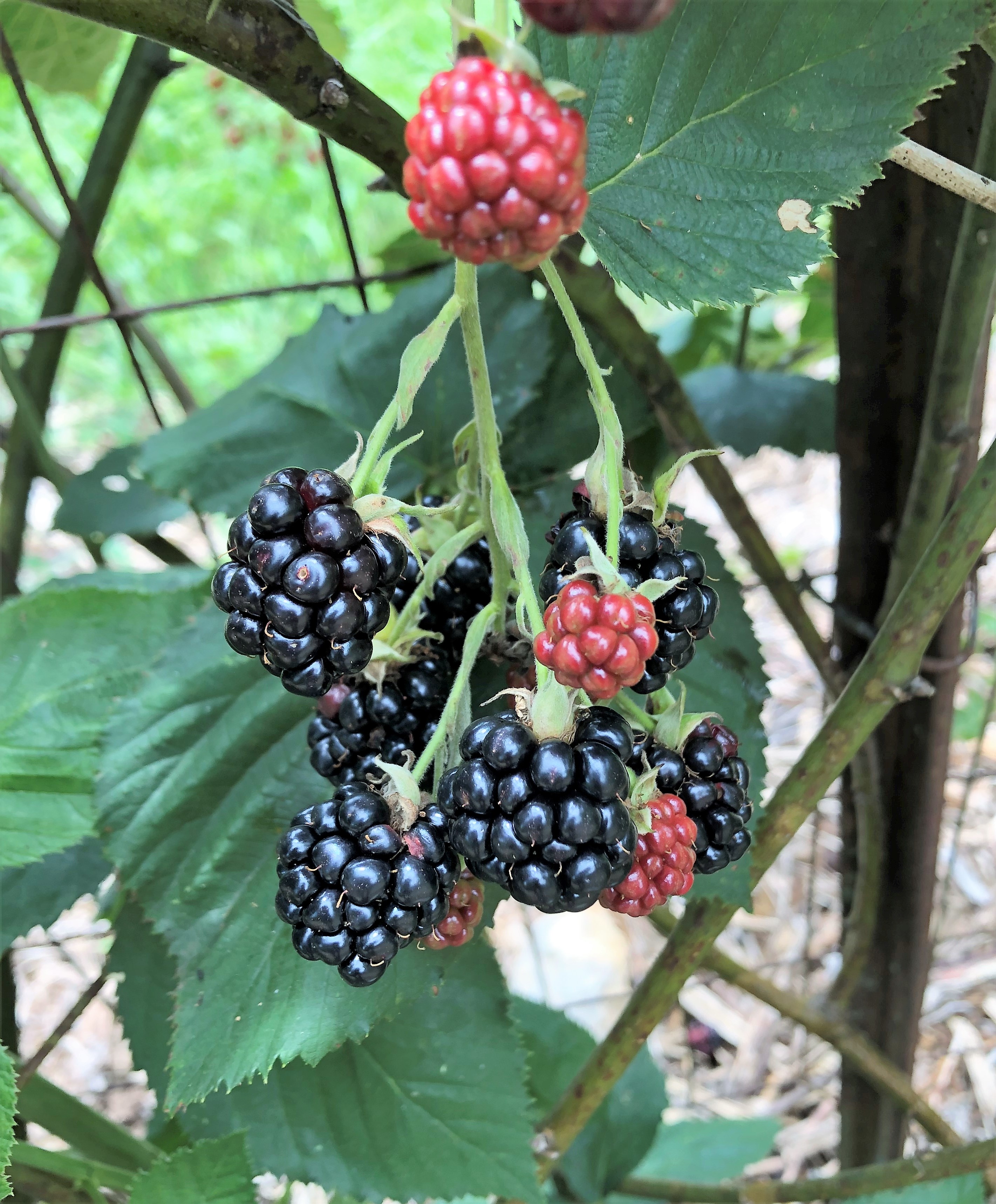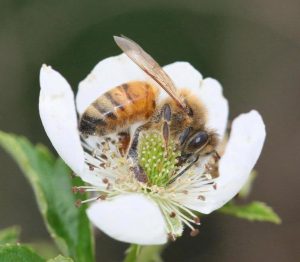
Although blackberries are well adapted to North Florida, many different biotic and abiotic factors can impact fruit production. Photo by Molly Jameson.
Diagnosing Abiotic Blackberry Fruit Disorders
Whether it be wild blackberries you’ve foraged or a prized cultured variety you’ve oh-so-carefully sustained, we are now in prime blackberry season, and there are many sweet, tangy delectable fruits to be eaten.
Blackberry bushes are well adapted to the Florida Panhandle and the plants can be found growing all over – along roadways, in ditches, throughout open fields, and also within forests.
Although wild blackberries and domesticated cultivars thrive in our climate, there is a wide range of factors that could affect blackberry fruiting. When diagnosing plant problems, we tend to blame insects and diseases, but there are many abiotic (non-living) factors that could negatively impact blackberry fruit production. If your blackberry drupelets (the small subdivisions that comprise a blackberry fruit) are compromised, you may be experiencing one or more of the following abiotic blackberry disorders.

Although blackberries can self-pollinate, insect pollination is critical for forming the best blackberries. Photo by Johnny N. Dell, Bugwood.org.
Poor Pollination. Blackberries, strangely enough, are not true berries botanically. True berries only have one ovary per flower (such as bananas, watermelons, and avocados!). Each blackberry flower contains over 100 female flower parts, called pistils, that contain ovaries. To form a fully sized blackberry with many drupelets, at least 75% of the ovaries need to be pollinated. While blackberries can self-pollinate, pollinator insects, such as bees, are very important to ensure adequate drupelet formation. When weather conditions are overly cloudy and rainy, bees are less active. If this coincides with blackberry flowering, you may end up with some blackberries that are nearly drupe-less.
White Drupe. If you notice patches of white and brown drupelets on your most sun-exposed canes, you might have white drupe disorder. When humidity drops and temperature heats up, solar radiation contacting your berries is more powerful, as there is less moisture in the air to deflect the intense heat. Berries that are not protected by leaf coverage, and those on trellises oriented for maximum sun exposure, are most vulnerable to white drupe damage.
Sunscald. Often associated with white drupe, sunscald is most common when temperatures are extreme. Daytime highs in the Florida Panhandle in June and July regularly reach 90°F, if not higher. At these times, fruit exposed to the sun can be hotter than the air temperature around them, which essentially cooks the fruit. As I suspect you’d prefer to cook your fruit after harvest in preparation for blackberry pie, orient your trellis so it gets shade relief during the hottest part of the day and harvest often.

Diagnosing a blackberry issue can be challenging, as there can be more than one culprit impacting the fruit. Photo by Molly Jameson.
Red Cell Regression. One of the not-so-well understood abiotic blackberry disorders is red cell regression, or red drupelet disorder. If you’ve ever harvested blackberry fruit and stored them in the refrigerator for later munching, you may think your eyes are deceiving you when you discover your fruit doesn’t appear as ripe as when you picked it. This regression in color is linked to rapid temperature change, but rest assured, it does not affect the sugar content of the fruit. There are a few things you can do if you think this is affecting your berries, such as harvesting in the morning when the berries are still cool, harvesting when the sky is overcast, or shading your berries pre-harvest. You can also try to cool your berries in stages, perhaps moving from the field, to shade, to A/C, and then to the fridge.
Beyond abiotic stresses, blackberries can also suffer from insect, pest, and disease damage, such as from stink bugs, beetles, mites, birds, anthracnose, leaf rust, crown gall, and beyond. For domesticated blueberry bushes, proper cultivar selection, site selection, planting technique, fertilization, irrigation, propagation, and cane training is important and will allow the plants to grow healthy to defend themselves against any abiotic or biotic nuisance that comes their way.
For more information about growing blackberries, check out the EDIS publication, The Blackberry (https://edis.ifas.ufl.edu/hs104).
- Cool Season Annual Herbs to Plant in December - December 11, 2025
- The Dirt on Compost: Hot and Worm Composting at Home - October 30, 2025
- Fall Gardening Spotlight: Collard Greens - October 3, 2025
